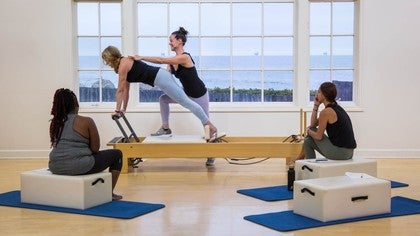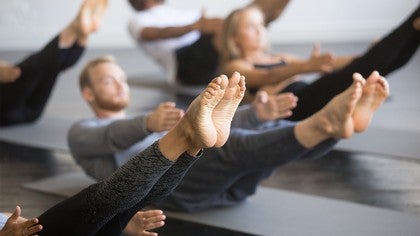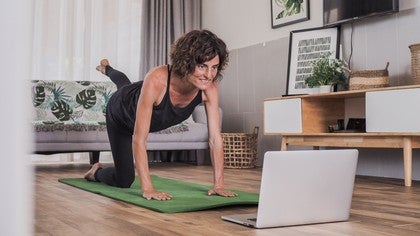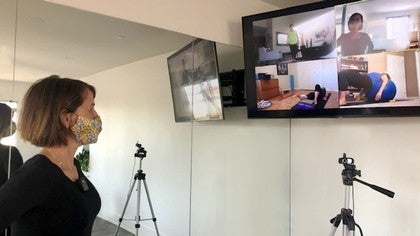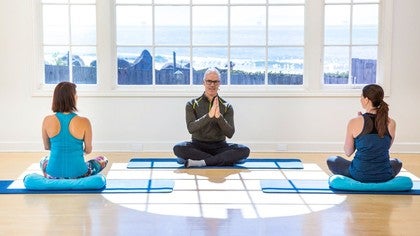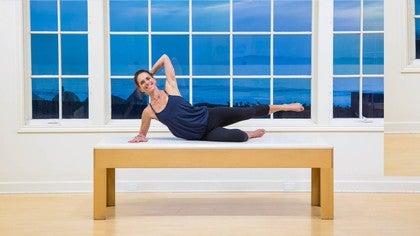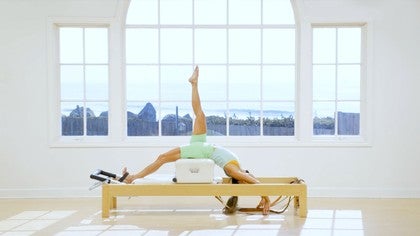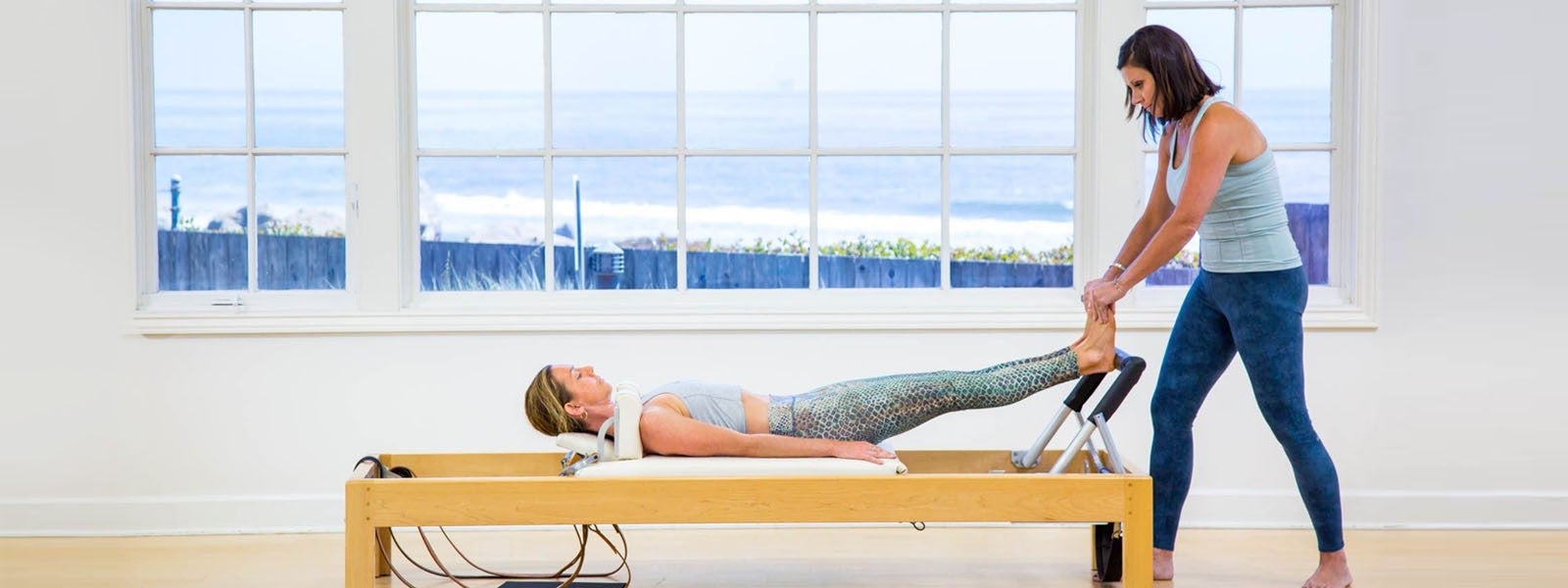
Structuring the Private Pilates Session
Think of the anatomy of a Pilates lesson in four parts:
- A. Move on the Reformer
- B. Move on the Mat (depending on how many exercises you do on the Reformer)
- C. “This is for you” (the teacher selects a few exercises specific to the needs of the student)
- D. An invigorating ending!
How can this help you teach your student?
Students will move through their exercises on the Reformer and/or the Mat for the first half of their workout. This allows the teacher to observe the body in motion and see where the body is today. Based on this observation, the “This is for you” portion of the class allows the teacher to select a few specific exercises (on the Cadillac, Chairs, or small apparatus, etc.) to enhance the student’s proficiency. Finally, an invigorating ending sends the student out of the studio with gusto. Sounds great, doesn’t it?
Let’s look at each section more closely.
The “A” List: The lesson begins on the Reformer. That being said, there are many exceptions to starting on the Reformer, but generally speaking, the Reformer brilliantly places the body in an optimal position for working from the center of the body. Joe Pilates starts us off lying down with the trunk of the body on a moving platform for Footwork. No neon signs needed here. Imbalances are spotlighted thanks to the physical landscape of the Reformer: the footbar, headrest, straps, and even the discreet labels showing the make and model of each apparatus reveal when the body is out of balance or alignment.
Section A will be about moving through your sequence of exercises on the Reformer.
Part B takes us to the Mat, the heart and soul of the method and everyone’s homework exercises, should they choose to accept them. Moving through all of your Mat exercises is of course dependent on how many exercises you do on the Reformer.
For example, a brand new student will do a handful of Reformer exercises and certainly have time to get to the Mat for a few exercises. The more seasoned, “advanced” practitioner may work on the Reformer for nearly the whole session. (More on this later.)
Part C is where the magic happens. You are warmed up and focused and now you’ll choose (or more likely your instructor will choose for you) a few exercises just for you: “This is for you.”
Pilates “elder” Jay Grimes speaks about his time in Joe Pilates’ studio and how Joe “knew your whole story” from the moment you walked into his studio. Joe would offer little instruction as you moved on the Reformer and the Mat. Next he would teach you a few exercises around the studio that were specific to your body’s needs. Thus, “This is for you.”
He wouldn’t tell you why you needed them or what he wanted to “fix” with the exercises. They were just a few special exercises, “for you.”
After spending around ten minutes on your “this is for you” repertoire, Part D wraps it all up with an invigorating ending. You’ll work one exercise or a small sequence that floats your boat and finishes off your workout so you can strut out the door and get on with your life.
Some of our Pilates endings are justifiably famous: Hanging on the Cadillac, Standing Arm Springs, or the full Traditional Ending on the Cadillac, just to name a few.
Again this is merely a general guideline for the hour. In my own workouts, I can use our formula of ABCD in various ways. They include:
Beginning on the Reformer: I’ve got some choices to make. Will I do my full Reformer workout? If the answer is yes, I know I’ll use most of the session for Part A. I’ll omit part B (due to time constraints) and proceed to a few “this is for you” exercises. Then I’ll decide on an ending.
Alternatively, perhaps I’ll use the entire hour for my full Reformer Workout (Part A) and then use a few rolling exercises on the Mat as both Part B and Part D.
I might choose to do all of my Mat exercises, skipping part A entirely and beginning with Part B. I’ll finish my Mat exercises in 30 minutes and then have lots of time for Part C (“this is for you”). My Part C in this scenario might include Spine Corrector, Cadillac, or Chair exercises. Maybe I’ll even pick one of these apparatus for my Part D ending sequence.
So many exercises, so little time.
This ABCD concept is fluid and adaptable to the individual. And while the phrase “ABCD” is not directly attributed to Joe Pilates, we know from Jay Grimes that the concept originated with him.
Here’s an example of ABCD in my teaching life. One of my clients struggles with all things Stomach Massage. Keeping a good lift in her back without sinking is a challenge for her. Consequently, all the other exercises that require this skill are also difficult: descending to the Mat with control and without using her hands, seated Footwork on the Chair, or Standing Pumping at the High Chair all come to mind.
Her “This is for you” exercises have helped her to identify the tools to improve all of these exercises. She finds it motivating as we work diligently toward her goal. She also sees progress as she visits her Reformer exercises, making progress on the Stomach Massage series over time.
Those last two words are very important: ‘over time.’ Change does not come overnight, and sometimes it comes only after years of diligent practice. The ABCD concept is a great way to think about your personal Pilates practice and keep your teaching fresh, interesting, and effective.
Have you taught your clients in this way, either intuitively or because you were taught that Joe Pilates structured his sessions using this concept? Is this something you can use in your teaching life or your personal practice? Let us know in the comments below.
Comments

You need to be a subscriber to post a comment.
Please Log In or Create an Account to start your free trial.

